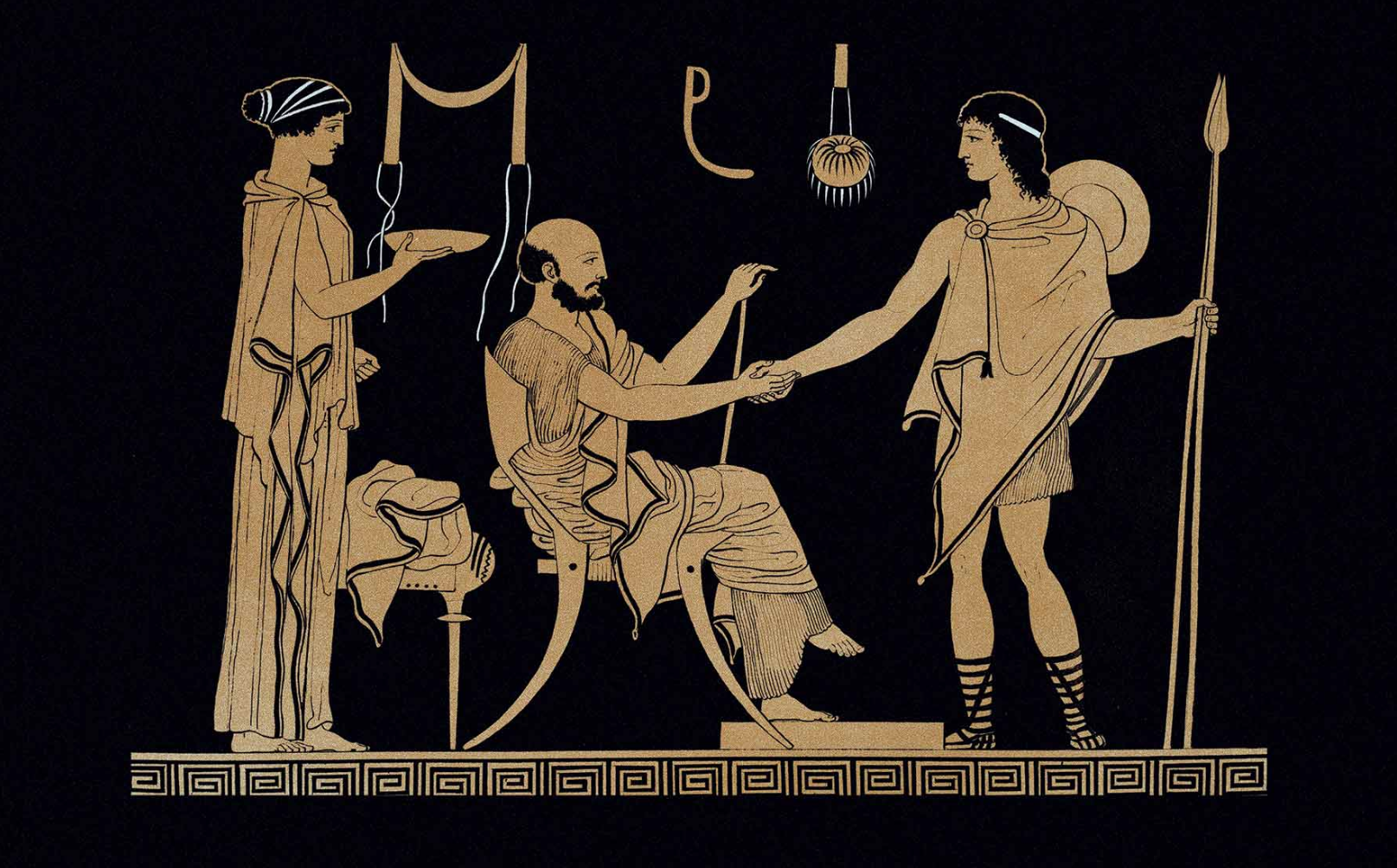Written by Lydia Serrant, Contributing Writer, Classical Wisdom
Ancient Greek art and drama was pivotal in the development of artistic expression the world over. From the earliest Archaic Greeks to the masters of the Classical age, the Greeks have produced art that has inspired Western civilization for thousands of years.
The Greeks established the foundational methods for practical stone-working that are still used today, particularly in limestone, clay, and marble. The bold lines and district curves that are an essential feature of Greek art also opened doors for the exploration of human anatomy and medical experimentation. The Greek thirst for knowledge and beauty paved the foundation stones of modern scientific discoveries in chemistry, physics, biology, and natural geometry.
Capturing bodily movement and mastering correct composition became incredibly important to the Greeks during the Classical period (480-323 BC) and the Golden Age. As anatomical knowledge and sculpting techniques became more sophisticated, so too did the artist’s ability to express various emotions. These new capabilities allowed sculptors and painters to experiment with different artistic styles in new and innovative ways.
The Greeks also taught us how important creativity and art are to the symbology of power and empire. Greek temples were utilized for worship, but also stood as an example of political power, economic influence, and military strength.
This idea was adopted by the British Empire at the height of its power. The British Museum was primarily built as an educational center for the public in 1759, but it also served as an example of status and a symbol of Imperial dominance.
The museum is still home to many relics from ex-colonial territories, and the architects built the external columns (known as Elgin Marbles) to match those of the Parthenon in Athens. Interestingly, the museum has on display several columns that were taken from the original Parthenon. Controversy still surrounds the museums’ ownership of the original columns which still hold great cultural significance for modern Greeks.
The Golden Ratio, the expression of absolute beauty using the principles of geometry and optics, was discovered by Greek artists and proponents of early Greek medicine. Through experimentation with the human form and the obsession with capturing motion in stone, the Golden Ratio emerged as the sum of perfection by both mathematical and artistic standards.
In mathematical terms, the Golden Ratio is a ratio of 1 to 1.618 (the Golden Number) and is expressed using the Greek letter phi. A resurgence of the use of the divine ratio appeared in Renaissance Italy, then known as ‘The Divine Proportion’. Most notably, the Golden Ratio was utilized by the master artist Leonardo Di Vinci in his most famous work, The Mona Lisa, a portrait that continues to attract millions of tourists every year.
But Greek art was not limited to experimentation with geometry and the mathematics of beauty; it was entangled with myth and legend. As Greek art evolved away from the Egyptian style and the natural Greek aesthetic was born, gods were bought to life in stone, and placed in a living and relevant context. The idea of ‘God as Man’ is an ideology that fascinates us to this day.
Scottish-born artist REILLY has created a digital gallery of composite images that collage famous people of color such as Michael Jackson, Barack Obama, and Rihanna and merge them with iconic Greek statues. The collection is an invitation for modern audiences to reframe the ancient work in a modern context. It also reminds us that the Greek and Roman worlds were more multi-cultural than we think (the white marble being a symbol of white, masculine power structures).
However, the collection also represents the human desire to revere the Gods. As the modern world becomes increasingly secular, people have given celebrities an almost ‘God-like’ status. The desire to immortalize important individuals in stone – or in this case, print – is a natural human desire that dates back to the very beginnings of civilization and artistic endeavor.
During the 17th and 18th centuries, Greek art was no longer reserved for ancient temples and the long-decayed villas of the rich. As Grand Tours became popular among European merchants and aristocrats, Greek-inspired mosaics and pottery began to appear in homes across the continent.
Many wealthy visitors to Greek ruins and artifacts commissioned local artists and potters upon returning home, seeking to recreate Greek designs on their floors and walls and demanded furnishings to match. The famous pottery maker Josiah Wedgewood capitalized on the craze and specialized in Greek-inspired vases that were popular among the wealthy.
Ancient Greek art remains influential. Sculpture and architecture have evolved over time, but the Greek arts have become the baseline from which later art forms have emerged.
From stone, to paint, to print, European artists hold Greek art in particularly high regard. Greek art and sculpture still has the ability to spark our imaginations, capture our emotions and even influence the way we feel about the nations we live in. Greek art has been kept alive and passed along, almost like a gift, from one generation to the next.
References:















No comments yet. You should be kind and add one!
Our apologies, you must be logged in to post a comment.